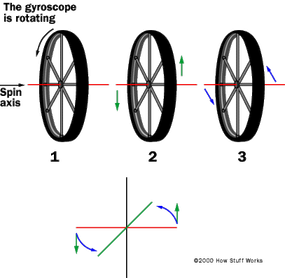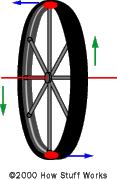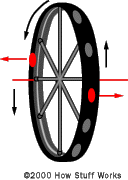A gyroscope is a mechanical or electronic device that utilizes the principle of angular momentum to maintain its orientation relative to the Earth's axis or resist changes in its orientation. A gyroscope typically consists of a spinning rotor, which provides angular momentum, and a set of gimbals or pivoted supports.
Every gyroscope is built around one or more axes, which serve as a foundational element in the device's construction. The spin axis is often aligned with the Z-axis, allowing the gyroscopic rotor to rotate freely, crucial for the device's operation. The housing or frame, along with bearings, provides structural support and protects the internal components.
While single-axis gyroscopes have just one primary axis of rotation, others, like three-axis gyroscopes, are designed to measure motion and orientation changes along all three spatial axes: X, Y and Z. The specific number and orientation of these axes can vary depending on the gyroscope's design and intended application.
Think of a single-axis gyroscope like a seesaw that only goes back and forth. It can only measure or respond to motion in one direction. On the other hand, a three-axis gyroscope is like a spinning top that you can move in any direction: forward and backward (X-axis), side to side (Y-axis) and even in a spinning motion like a top (Z-axis).
Gyroscopic Stability
Now you may be wondering what any of this device has to do with Earth and its axis. The connection between the two can be found in the concept of gyroscopic stability. The planet acts as a colossal gyroscope because it rotates around its axis. This rotation gives Earth a property known as angular momentum, which means it wants to keep spinning in the same direction.
Gyroscopes, on the other hand, are devices designed to maintain their orientation in space by harnessing the principles of rotational movement (also referred to as rotational motion). They have a spinning rotor that resists changes in its axis.
When subjected to external forces, gyroscopes exhibit a behavior called precession, where their axis gradually changes direction rather than immediately tilting. (We'll take a closer look at this behavior in a bit.)
Gyroscopes essentially mimic Earth's stability in its rotation, which is why engineers and scientists can use these devices to achieve precise and steady motion or orientation in everything from navigation systems to spacecraft.





